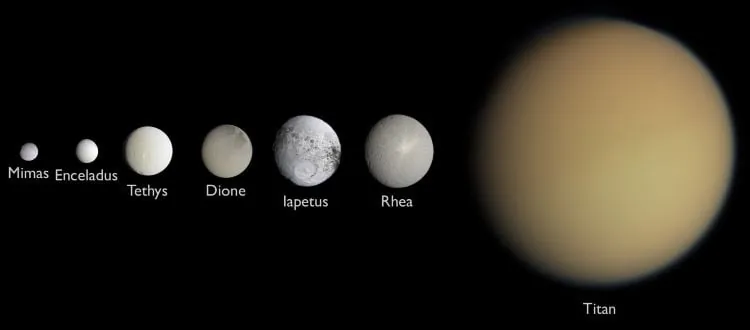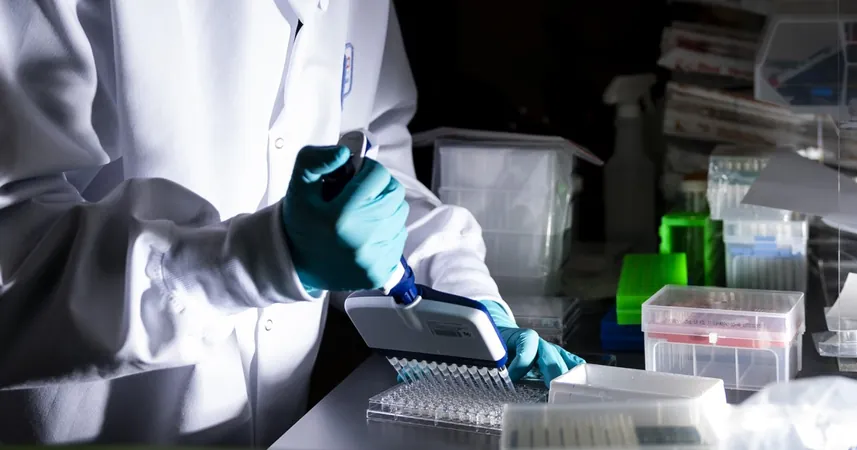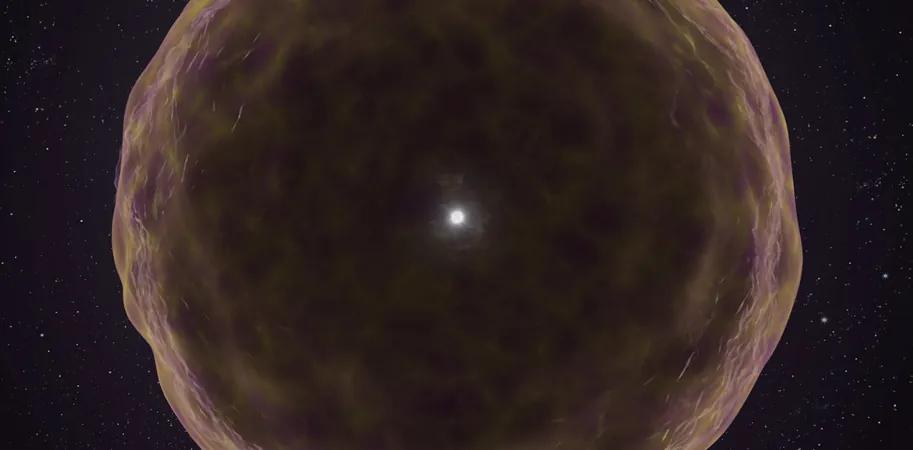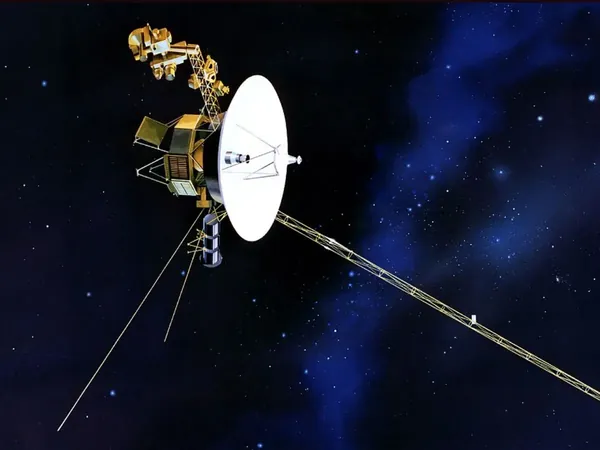
Unveiling Saturn's Moons: JWST Discovers Four Unique Types of Carbon Dioxide
2025-07-29
Author: Amelia
Unlocking Secrets of Saturn's Moons
What can the presence of carbon dioxide (CO₂) reveal about the formation and evolution of Saturn’s moons? A groundbreaking study recently submitted to The Planetary Science Journal dives deep into this question, presenting findings that could reshape our understanding of planetary bodies and their potential for harboring life.
A Stellar Investigation with JWST
Utilizing data from NASA’s formidable James Webb Space Telescope (JWST), researchers examined the CO₂ signatures on eight of Saturn’s mid-sized moons: Dione, Enceladus, Hyperion, Iapetus, Mimas, Phoebe, Rhea, and Tethys. Their mission? To identify the distinct types of CO₂ on each moon by analyzing wavelength shifts in the data.
Four Distinct CO₂ Types Uncovered
The study unveiled four unique types of trapped CO₂ across these celestial bodies. The CO₂ found on Dione and Rhea originates from Saturn's E-ring, while Phoebe appears to produce CO₂ from organics that is then transported to the darker areas of Iapetus and Hyperion. Intriguingly, trapped CO₂ was also detected within the water ice of Iapetus and Hyperion, suggesting complex interactions at play.
Connections Beyond Saturn: Galilean Moons
These findings aren't just limited to Saturn’s moons; the research hints at intriguing implications for Jupiter’s Galilean moons as well. "The observations here could inform our understandings of CO₂ on these icy satellites, despite some spectral differences," the researchers commented.
A Broader Context of CO₂ in the Solar System
This study adds to a growing body of evidence about carbon compounds in our solar system. In 2023, JWST data revealed carbon on Europa, following earlier findings from the Hubble Space Telescope. Beyond our solar system, CO₂ has even been detected on gas giant exoplanets in the HR 8799 system.
Carbon Dioxide: The Silent Indicator of Habitability?
While CO₂ makes up only about 0.04% of Earth's atmosphere, it plays a vital role in climate regulation and sustains life by enabling photosynthesis. On other planets like Venus and Mars, CO₂ dominates their atmospheres, contributing significantly to Venus's extreme greenhouse effect.
The Potential for Life?
Though CO₂ alone isn't a definitive biosignature, its presence can suggest biological activity and offer vital clues about a celestial body's habitability. Even in airless moons, understanding CO₂'s origins could unveil their mysterious histories and the impact of Saturn’s rings.
What Lies Ahead in Planetary Research?
The researchers are calling for further studies and laboratory experiments on the dark materials found on these moons to better understand how CO₂ is trapped. What future discoveries await us regarding Saturn’s moons and their enigmatic atmospheres? Only time will tell!
Stay Curious!
As we continue to unravel the mysteries of our universe, one thing is clear: the quest for knowledge is exhilarating. Keep looking up!









 Brasil (PT)
Brasil (PT)
 Canada (EN)
Canada (EN)
 Chile (ES)
Chile (ES)
 Česko (CS)
Česko (CS)
 대한민국 (KO)
대한민국 (KO)
 España (ES)
España (ES)
 France (FR)
France (FR)
 Hong Kong (EN)
Hong Kong (EN)
 Italia (IT)
Italia (IT)
 日本 (JA)
日本 (JA)
 Magyarország (HU)
Magyarország (HU)
 Norge (NO)
Norge (NO)
 Polska (PL)
Polska (PL)
 Schweiz (DE)
Schweiz (DE)
 Singapore (EN)
Singapore (EN)
 Sverige (SV)
Sverige (SV)
 Suomi (FI)
Suomi (FI)
 Türkiye (TR)
Türkiye (TR)
 الإمارات العربية المتحدة (AR)
الإمارات العربية المتحدة (AR)